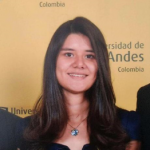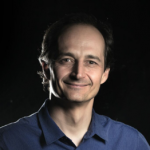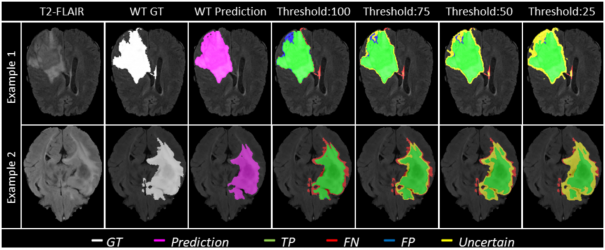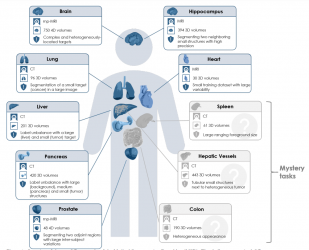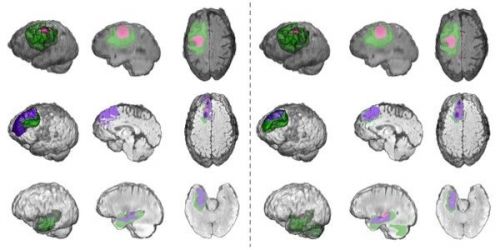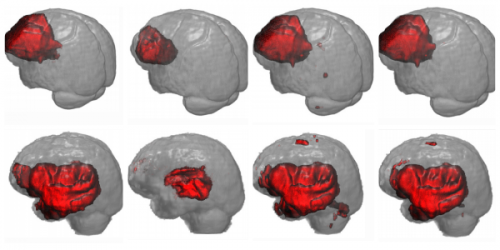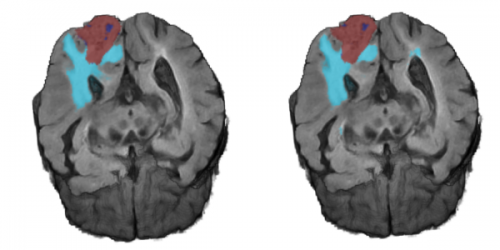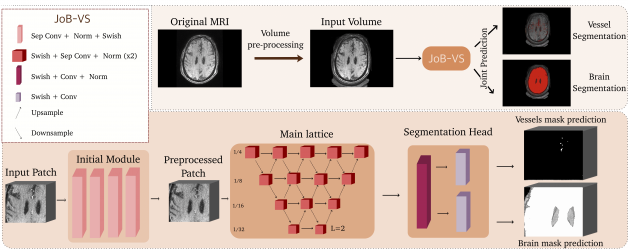Biomedical images are useful for diagnosis, treatment, and follow-up of patients with diverse pathologies and conditions. AI-based methods are tools to analyze these images. However, this task requires the intervention of specialized medical personal, and the interpretation of the images is dependent on the perception and expertise of the specialist analyzing each image. Medical image analysis requires considerable processing times and significant use of computational resources. Due to the complexity of the data, the anatomical variations, different modalities, three-dimensionality, among other challenges of this data.
We focus on the segmentation task, i.e., to find and differentiate a structure of interest within an image. This structure could be an organ or a pathology and could be in multiple locations and have different morphologies and sizes. Thus, we are developing a general segmentation method that has an excellent performance in various tasks and is independent of the possible variations and modalities found in data. We are implementing our methodology using the data provided by the Medical Segmentation Decathlon. That is a challenge with ten different categories for different organs and pathologies.

